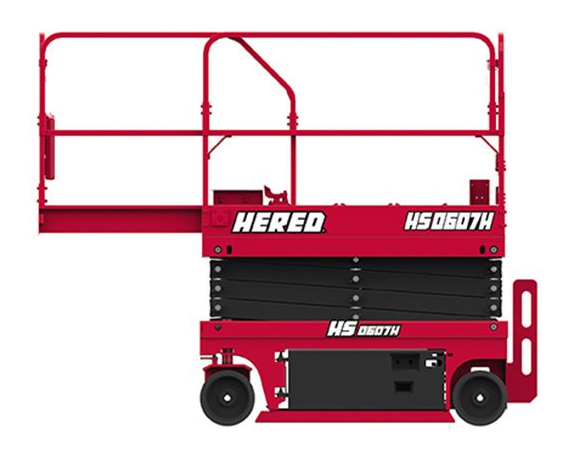How Does a Hydraulic Scissor Lift Work?
A hydraulic scissor lift is a versatile scissor platform lift that is commonly used in various industries for lifting and positioning heavy loads. It operates on the principle of hydraulic power, utilizing hydraulic cylinders to raise and lower the platform. Let's explore how a hydraulic scissor lift works in more detail.
1. Basic Structure:
A hydraulic scissor lift consists of a platform or deck that is supported by a set of linked scissor-like mechanical arms, which are connected through hinges. These arms, known as scissor legs, are typically made of heavy-duty steel and are designed to provide stability and support to the platform.
2. Hydraulic System:
The hydraulic system is the key component that enables the lifting and lowering action of the scissor lift. It consists of a hydraulic pump, hydraulic fluid, hydraulic cylinders, control valves, and other associated components. The hydraulic pump is powered by an electric motor or an internal combustion engine and is responsible for generating hydraulic pressure.
3. Hydraulic Cylinders:
Hydraulic cylinders are the main actuators in a hydraulic scissor lift. They are typically positioned vertically between the scissor legs and the platform. Each hydraulic cylinder is composed of a cylinder barrel, a piston rod, and a piston. The cylinder barrel houses the piston and the hydraulic fluid, while the piston rod extends from the piston and attaches to the platform.
4. Hydraulic Fluid and Pressure:
Hydraulic fluid is used to transmit force in the hydraulic system. It is a specially formulated fluid with excellent lubricating properties and a high boiling point to withstand the demands of hydraulic systems. The hydraulic pump pressurizes the hydraulic fluid, creating hydraulic pressure in the system. This pressure is distributed to the hydraulic cylinders through hydraulic hoses or pipes.
5. Lifting Action:
To raise the aerial work platform, hydraulic pressure is applied to the hydraulic cylinders. The hydraulic fluid is forced into the cylinders, pushing the pistons upward. As the pistons extend, they push against the scissor legs, causing them to unfold and extend. This extension of the scissor legs results in a vertical lifting motion of the platform. The scissor legs provide stability and prevent the platform from tilting or swaying during the lifting process.
6. Lowering Action:
Lowering the platform is achieved by releasing the hydraulic pressure in the cylinders. The control valve is operated to open a pathway for the hydraulic fluid to return to the reservoir. This allows the pistons to retract, and the scissor legs to fold back in a controlled manner. The platform gradually descends under its weight or any additional load placed on it.
7. Safety Mechanisms:
Hydraulic scissor lifts are equipped with various safety mechanisms to ensure safe operation. These may include overload protection, safety rails or gates around the platform, emergency stop buttons, and safety interlocks. Overload protection systems can detect excessive loads and prevent the lift from operating beyond its rated capacity. Safety features are crucial to prevent accidents, protect workers, and ensure compliance with safety standards.
8. Controls and Operation:
Hydraulic scissor lifts are operated using control panels or control switches located on the lift or through a remote control system. The operator can use these controls to activate the hydraulic pump, control the lifting and lowering actions, and stop the lift in case of emergencies. The controls may also include additional features such as platform tilting or rotating functions, depending on the specific design and application of the scissor lift.
Conclusion
A hydraulic scissor lift works by utilizing hydraulic power to raise and lower a platform. The hydraulic system, consisting of hydraulic cylinders, hydraulic fluid, control valves, and a hydraulic pump, enables the lifting action. The hydraulic fluid is pressurized, and this pressure is applied to the hydraulic cylinders, extending the pistons and unfolding the scissor legs, resulting in a vertical lifting motion of the platform. By controlling the hydraulic pressure, operators can safely and efficiently position heavy loads at various heights using a hydraulic scissor lift.




